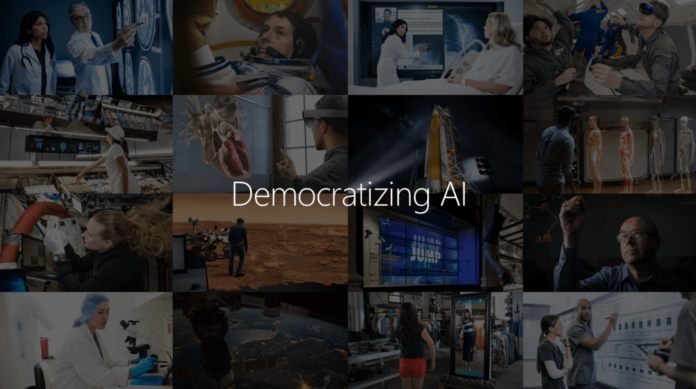Before the COVID-19 pandemic, artificial intelligence, machine learning, and deep technology innovations were introduced over several years along with pilots and evidence of this model. This situation has completely changed now. Ventures are now trying to quickly install AI solutions across various business processes. Consequently, to facilitate considerable outcomes for enterprises and clients across the band there is a crucial requirement to democratize AI.
Technology is now moving past the augmentation that swaps human ability or skill to create superhuman capabilities. Augmentation is what leaders call for to strap up and drive. By 2022, 70% of client relations will engage upcoming technologies like mobile messaging, chatbots, and machine learning (ML) applications; Gartner predicts. Now the question that arises is; How rapidly will these automation technologies, see the light of day? Will it replace human jobs, when it happens?
Unending advancement of technological abilities, cost of technology, struggle by labor with skills as well as supply and demand dynamics social and regulatory acceptance are the factors that determine the speed and degree of automation. There are a few key principles of democratizing artificial intelligence (AI). One of the major reasons behind chatbots’ and voice assistants’ evolution into widely installed use-cases of AI is simple, the front-end and powerful backend or simply natural interfaces that can be used by anyone. Organizations should take a look at how influential AI applications are, offered to users over easy and spontaneous interfaces like chat and voice along with platforms that are used widely like WhatsApp, Microsoft Teams, and Slack, etc.
The hurdle for AI deployment is being short of large data sets for the application in thought. Data efficient algorithms and techniques are required to employ large-scale and nonspecific datasets that require a minimal custom application. To begin with, Specific datasets and applications are intended to keep adding to the dataset with the application. The products of this are constantly developing applications and quicker deployment cycles. And finally, the Low-code or No-code platforms. Enterprises are considering that the application of no-code and low-code let users and non-developers to construct and install AI applications. This is because sometimes the ability of an organization to deploy AI applications is limited due to less number of trained developers. AI applications enable larger exposure and ROI driven applications.
By expanding access and promoting adoption, tech-innovators and industry leaders should keenly spearhead efforts to support the democratization of AI. Releasing AI and ML products does kick start by understanding which part of the value chain i.e. tool or platform will democratize. These empower the labor force and put potential in the hands of non-tech experts. Therefore, it is necessary to invest in training to integrate legacy with AI and will lead to business intelligence (BI) tools. This will lower the barrier to adoption, reshapes the behavior of users, and is critical in technology acceleration. It fundamentally makes data and applications a part of human lives.

